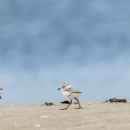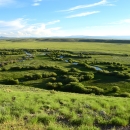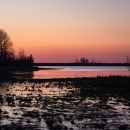May is American Wetlands Month—a time to celebrate one of nature’s most productive ecosystems!
This year we are proud to celebrate the National Wetlands Inventory (NWI) Program’s 50th Anniversary. For the past 50 years, NWI has led the collection of scientific information necessary to strategically manage America’s wetland habitats and their associated ecosystem benefits - from detailed wetland maps to information on how wetlands are changing.
These data are relied on by thousands of government and private sector users each day to better understand, manage, and conserve wetlands. NWI maps enable the streamlining of infrastructure planning, permitting, and mitigation while conserving wetlands and their many benefits. Spanning 70 years, NWI’s congressionally mandated Wetlands Status and Trends reports provide decision-makers with the information they need to meet wetland management and policy goals that support the health and prosperity of American communities.
As we celebrate wetlands this May, please join us in learning more about these vital habitats, how they are changing, and how we can work together to better conserve wetlands and their benefits.
The U.S. Fish and Wildlife Service works to protect and restore wetlands through a wide range of programs, in this way conserving wetlands and their benefits for future generations. The National Wetlands Inventory Program provides foundational wetland data necessary for the Service and all Americans to strategically manage our wetland habitats and associated ecosystem benefits. The Service's National Wildlife Refuge System protects high quality wetland habitat within most of its 570 refuges spread across the United States. The Coastal Program promotes cooperative coastal wetland conservation so that wildlife and local communities thrive. The Migratory Birds Program works with partners to protect, restore, and conserve bird populations and their habitats for the benefit of future generations.
Wetlands Stories
Follow our stories to learn more about these amazing habitats and the role the Service plays in conserving them.














